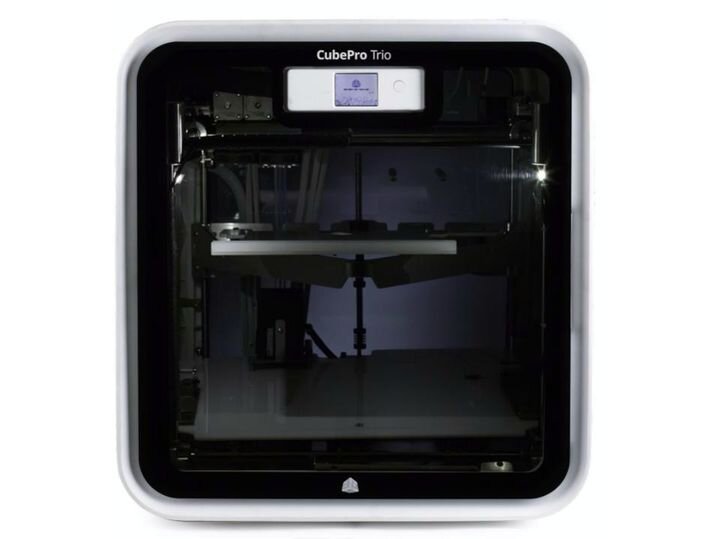![The now-ancient CubePro 3D printer, apparently “one of the best 3D printers of 2020” [Source: Forbes]](https://fabbaloo.com/wp-content/uploads/2020/05/image-asset_img_5eb08beb7bd0d.jpg)
I am trying to not laugh too hard at an unbelievable article in Forbes describing what they tout as the “Best 3D Printers of 2020”.
I’ve seen this phenomenon before, where a mass market publication attempts to rank a technology they clearly don’t understand very well, but this episode is beyond anything I could have imagined.
The article begins with this statement:
“All you need is a little plastic and some technical know-how, and you can print a physical copy of almost anything.”
Really? Is that all there is to it? And you can 3D print “almost anything”?
There’s more, but nothing worthy of repeating. Let’s just get into the ”The Best 3-D Printers of 2020”. Here are the machines on their list, and my thoughts on them:
FDM Printing: Original Prusa i3 MK3 Kit
Aside: “FDM” is a trademarked process by Stratasys, and can only refer to Stratasys’ extrusion process. The correct term to be used n this case is “FFF”, for fused filament fabrication.
That aside, the Prusa i3 MK3 is indeed a fine 3D printer. However, it’s not the current model from the Czech company, which happens to be the MK3S. Also, kits should not be recommended to those who are not comfortable with a detailed electronics and mechanical assembly process.
SLA Printing: The Prism Desktop 3D Printer
I have to admit I am not familiar with the Prism 3D printer. After some investigation, which included clicking on the article’s link that turned out to point at a stale Indiegogo campaign that ended seven months ago, it became clear that this is a very low-cost device from BEAM 3D. While this device is likely quite capable, it is essentially the same as dozens of other options at that price range for resin-powered machines.
ELEGOO Mars UV Photocuring LCD 3D Printer
This item I might agree could be on the list, as it is well-regarded by virtually all customers. I have a friend who has one and he stands by its quality and ease of use. The ELEGOO Mars is a low cost, powerful resin 3D printer. If that’s the case, then why recommend the Prism above? They are very similar in function.
FlashForge Creator Pro 2017
Really? This device was a capable machine a few years ago, but there are plenty of better options. The Creator line from Flashforge was developed from MakerBot’s original open source designs – and they are from 2009! Flashforge has done a great job to add features and tweaks to improve the performance of the design, but it’s now an old design. It doesn’t even include automated leveling.
CubePro Trio
Are you kidding? Forbes, this selection is absolutely and totally wrong. The CubePro line, made by 3D Systems, was announced in May 2014 (!) and discontinued years ago. The CubePro’s design was based strongly on the CubeX, which just happens to be the very worst 3D printer I have ever used, and I’ve used many different models. The CubePro uses proprietary filament cartridges that hold poor quality filament and are overly expensive — and there are very few sources for this dwindling material. There is no way on this Earth the CubePro Trio should be on this or any other list of “best 3D printers”.
Glowforge
The Glowforge is not even a 3D printer. It is a laser cutter, albeit equipped with some fancy user interfaces. Why is it on this list of best 3D printers at all? Glowforge even admits they are not a 3D printer. They say:
“The technical name for the category of tools that includes Glowforge is a CNC laser cutter engraver, but that’s a mouthful, so we call it a 3D laser printer.”
It’s a laser cutter.
And that’s the entire list of alleged “Best 3D Printers For 2020”. If I were to make a list it would be quite a bit different, and mainly because the “best” 3D printer will vary considerably depending on what it will be used for. As an example, suppose you are a metal foundry seeking a way to 3D print moderately-sized metal objects for clients in low volumes? Would the Prusa i3 MK3 be appropriate? Or the CubePro Trio? I think not.
“Best Of” lists must have a target in mind, otherwise they are meaningless.
But they can be entertaining at times.
Via Forbes

